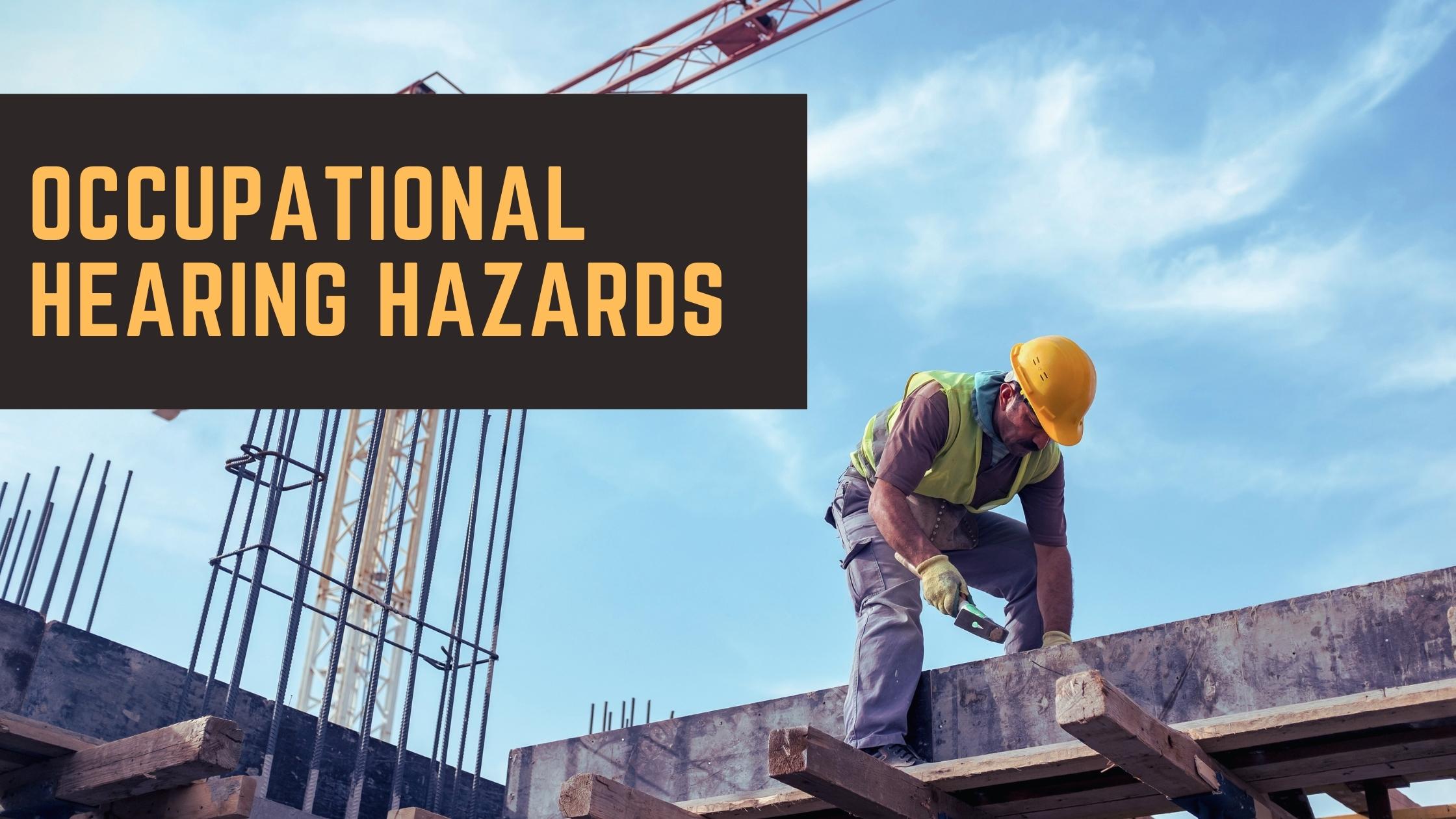Exposure to loud noise is a major cause of hearing loss. One of the most commonplaces that people absorb higher levels of sound is in the workplace. Occupational hearing hazards increase the risk of developing hearing loss, a chronic condition that impacts an estimated 48 million people. Impaired hearing reduces the ability to collect and process sound which produces a range of symptoms that often take a toll on daily life. This includes: straining communication, affecting relationships, social withdrawal, and impacting one’s work life. Hearing loss can also affect mental and physical health by contributing to the development of other health conditions. Protecting your hearing from occupational hearing hazards can significantly reduce your risk of hearing loss and enhance your hearing health!
What are Occupational Hearing Hazards?
Occupational hearing hazards are risk factors in the workplace that are potentially harmful for hearing health. There are two main types of occupational hearing hazards:
- Loud noise: exposure to sound above 85 decibels is considered loud and hazardous for hearing. Numerous types of work environments exceed this volume – construction sites, social settings (restaurants), airports etc.
- Ototoxic chemicals: this includes chemicals like solvents which can impact hearing health – carbon monoxide, metals, hydrogen cyanide etc.
According to the Hearing Health Foundation:
- An estimated 22 million people are exposed to hazardous noise levels in the workplace
- 12% of the working population experiences challenges with hearing
- 8% navigate tinnitus, which is a ringing or buzzing like noise in the ears and one of the most common signs of hearing loss.
- 24% of all cases of hearing loss is caused by occupational hearing hazards
Occupational hearing hazards are a significant risk factor for developing noise induced hearing loss. Being aware of the noise in your work environment and ways to mitigate potential harm is significantly beneficial for your hearing health.
Noise Induced Hearing Loss
One time or consistent exposure to loud noise can cause permanent damage that results in hearing loss. Sound is measured in decibels (dB) and noise above 85dB can take a toll on hearing. This is the equivalent of busy city traffic, household appliances like a vacuum, or being in a social setting. According to the Occupational Health and Safety Administration (OHSA), exposure to 85dB for 8 hours a day is not particularly dangerous but anything that exceeds this increases the risk for impairing hearing. OSHA’s recommended guidelines list that for every 3-decibel increase (after 85dB), the safe exposure time is reduced by half:
- 85dB: 8 hours
- 88dB: 4 hours
- 91dB: 2 hours
- 94dB: 30min
It is important to measure the noise in your work environment to determine how long you can safely navigate that noise. Exceeding this can damage the hair cells that are in the inner ear. Each ear is filled with thousands of hair cells that help translate soundwaves into electrical signals that are then sent to the brain. This is how we are able to understand what we hear. Loud noise can cause these hair cells to lose sensitivity and/or die which prevents them from processing incoming sound. Unlike other types of cells, hair cells in the inner ear do not regenerate. This means that when they are damaged, this is permanent and reduces the brain’s ability to receive and make sense of sound information.
Tips to Protect Hearing Health
There are several ways you can effectively protect your hearing from occupational hearing hazards. A few tips include:
- Wear protective gear: protective gear like earbuds, headphones, and ear plugs reduce the amount and impact of loud noise you absorb, offering great protection.
- Measure workplace volume: knowing the decibel levels in your workplace helps you determine how long you can safely be exposed. You can download an app to measure sound in your environment!
- Access accommodations: employers are required to provide workplace accommodations that create greater safety and accessibility. This includes hearing protection, breaks, support for any hearing loss etc.
By integrating these safety measures, you can mitigate occupational hearing hazards. Additionally, be sure to have your hearing assessed regularly. Hearing tests identify any impairment and effective treatment options that can transform hearing health!

